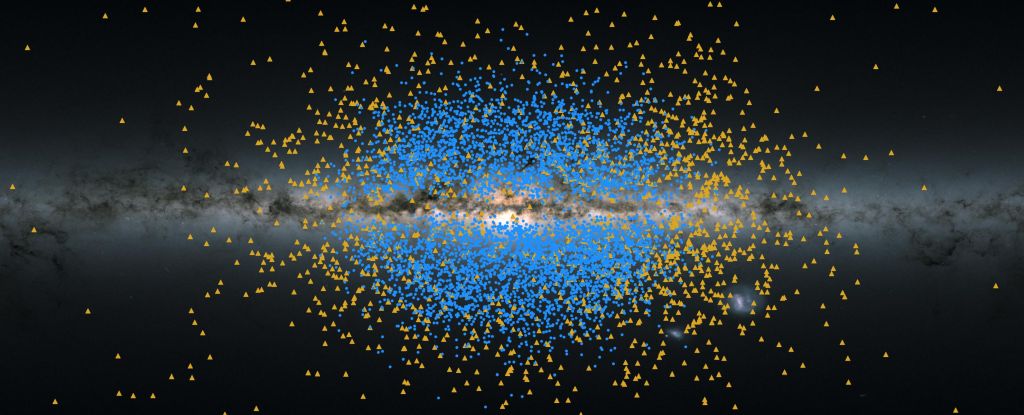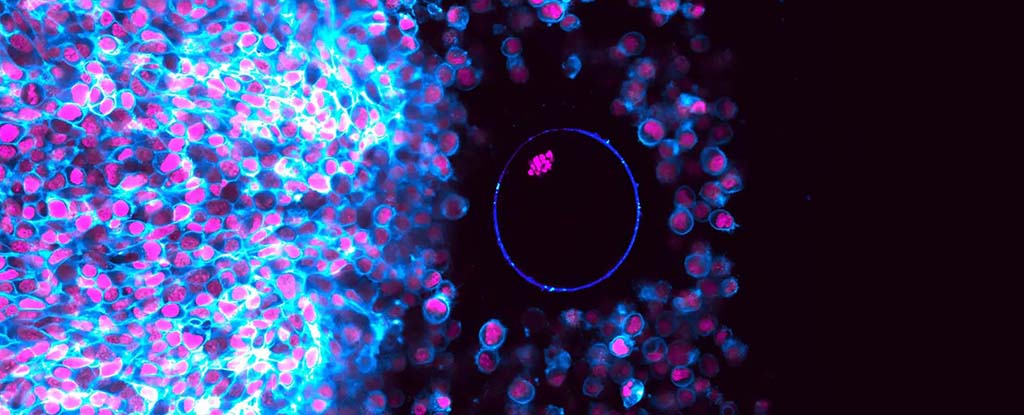Relics of the Milky Way’s birth have just been discovered hiding in plain sight.
Towards the center of the galaxy, two streams of stars nearly as old as the Universe have been discovered circling the heart of the Milky Way. A new analysis based on data from the European Space Agency’s Gaia telescope strongly suggests that these ancient streams existed before the Milky Way even had its spiral arms – when it was just a baby galaxy extending its first tendrils of stars out into the space around it.
These two streams, discovered by astrophysicist Khyati Malhan and astronomer Hans Walter-Rix of the Max Planck Institute for Astronomy in Germany, have been named Shiva and Shakti after the creators of the Universe in Hindu mythology.
“What’s truly amazing is that we can detect these ancient structures at all,” Malhan says. “The Milky Way has changed so significantly since these stars were born that we wouldn’t expect to recognize them so clearly as a group – but the unprecedented data we’re getting from Gaia made it possible.”
The Milky Way is thought to have started forming some 13 billion years ago, when the Universe was freshly minted and forging its first stars and galaxies at a tremendous rate. Piecing together that history is a field known as galactic archaeology, and it relies in part on finding populations of stars whose properties are consistent with an ancient origin.
This is where the work being performed by Gaia is so valuable. The space telescope is mapping the Milky Way with the highest precision yet, collecting data on the 3D positions of the galaxy’s stars, their velocity, and their proper motions. It also measures a property known as the metallicity of a star – that is, metallic elements in its composition.
Since most metals simply weren’t around before stars and novae came along and generated them, the metallicity of a star can give us some idea of how old a star is. The more metal content a star has, the younger it probably is.
Using this information in conjunction with the Gaia data, astronomers can identify groups of stars that we might not otherwise detect. If a group of stars is in the same place in space, moves through the galaxy in the same way, and has similar metallic properties, that means those stars probably belong to the same specific group.
Moreover, these structures can be used to determine the history of the Milky Way. Some stellar streams, for instance, can be traced to disrupted clusters of stars. Others are the remnants of other galaxies that fell into and were torn apart by the gravity of the Milky Way.
This is how Malhan and Walter-Rix identified Shiva and Shakti. They used Gaia to perform galactic archaeology on regions closer towards the heart of the Milky Way in 2022, and identified therein a population of very old, very metal-poor stars. But they noticed two distinct streams with stars of a similar age – around 12 to 13 billion years old – a little farther out from the center.
“When we visualized the orbits of all these stars, two new structures stood out from the rest among stars of a certain chemical composition,” Malhan says. “We named them Shakti and Shiva.”
Each stream has a mass of around 10 million Suns, orbiting in the same direction as the rotation of the Milky Way. Shiva is closer to the galactic center with more elliptical orbits; Shakti is a little farther out, but its stars trace more circular paths around the galactic center.
Their structures, the researchers found, suggest that the two streams each formed as a distinct structure that then merged with the Milky Way spiral as it was forming, feeding its growth. The pair believes that the galaxy formed from a blob that grew as filaments and tendrils of stars from the surrounding space fell onto and wrapped around it, forming stars. Shiva and Shakti appear to be two of these filaments.
“Revealing more about our galaxy’s infancy is one of Gaia’s goals, and it’s certainly achieving it,” says Gaia project scientist Timo Prusti of the European Space Agency.
“We need to pinpoint the subtle yet crucial differences between stars in the Milky Way to understand how our galaxy formed and evolved. This requires incredibly precise data – and now, thanks to Gaia, we have that data. As we discover surprise parts of our galaxy like the Shiva and Shakti streams, we’re filling the gaps and painting a fuller picture of not only our current home, but our earliest cosmic history.”
The research has been published in The Astrophysical Journal.





